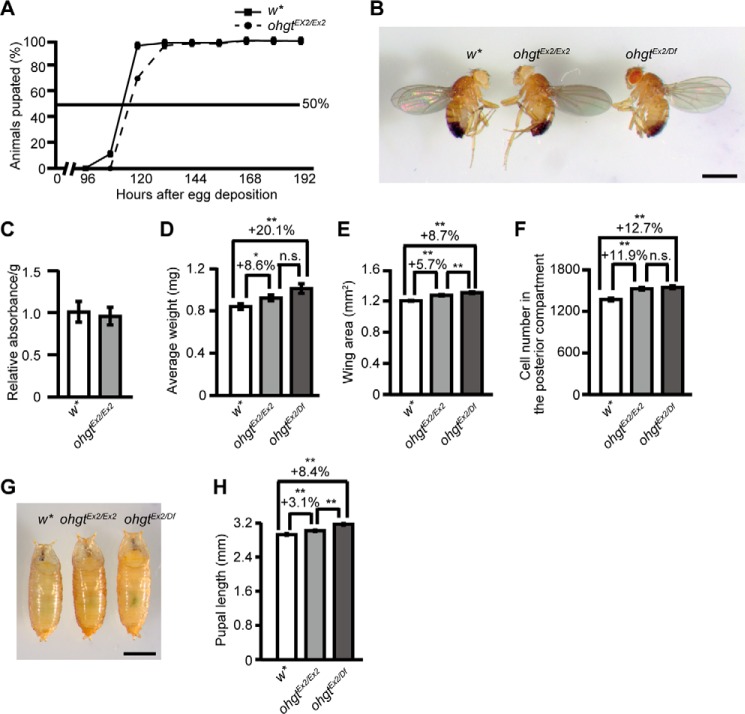FIGURE 3.
The ohgtEx2 mutants show overgrowth phenotype. A, percentage of w* and ohgtEx2 animals pupated at each time point after egg deposition. B, w*, ohgtEx2/Ex2, and ohgtEx2/ohgtDf (ohgtEx2/Df) adult male flies. The scale bar represents 1 mm. C, the ohgtEx2 larvae showed food intake similar to that of w* larvae (n = 4). D, average wet weight of w*, ohgtEx2/Ex2, and ohgtEx2/Df adult males. Animals were weighed in batches of 10, and average weight per animal was calculated (n = 10). E, average wing area of w*, ohgtEx2/Ex2, and ohgtEx2/Df adult males (n = 30). F, average number of cells in the posterior compartment of the wing of w*, ohgtEx2/Ex2, and ohgtEx2/Df adult males (n = 30). G, w*, ohgtEx2/Ex2, and ohgtEx2/Df pupae. An animal whose body length is closest to the average was chosen from each genotype. The scale bar represents 1 mm. H, average body length of w* (n = 66), ohgtEx2/Ex2 (n = 80), and ohgtEx2/Df (n = 73) pupae. Error bars indicate S.E. * indicates p < 0.05, and ** indicates p < 0.01. p values were calculated by Student's t test. n.s. indicates no significance.

